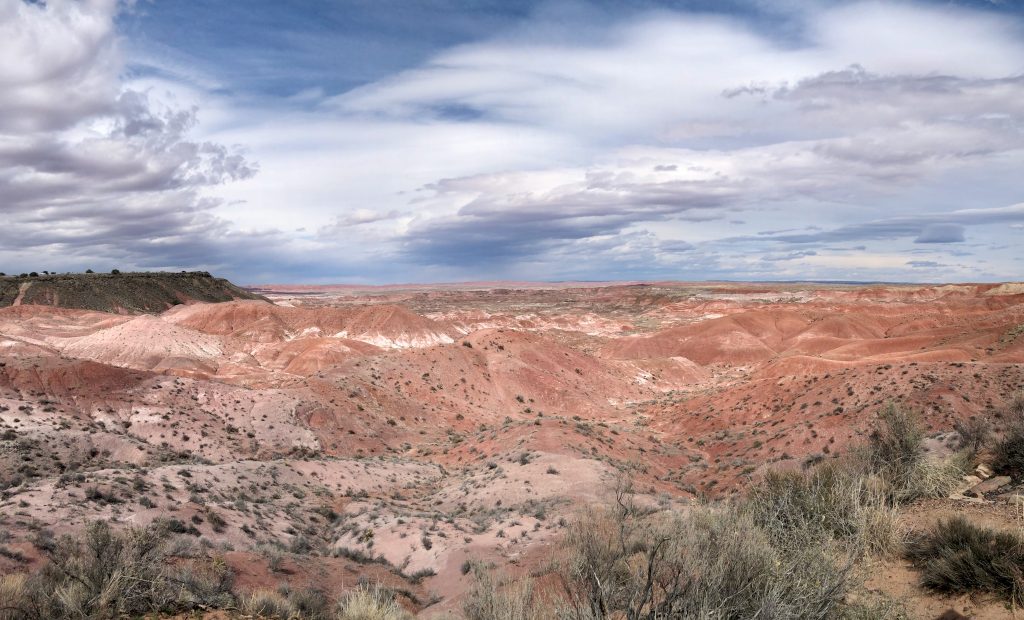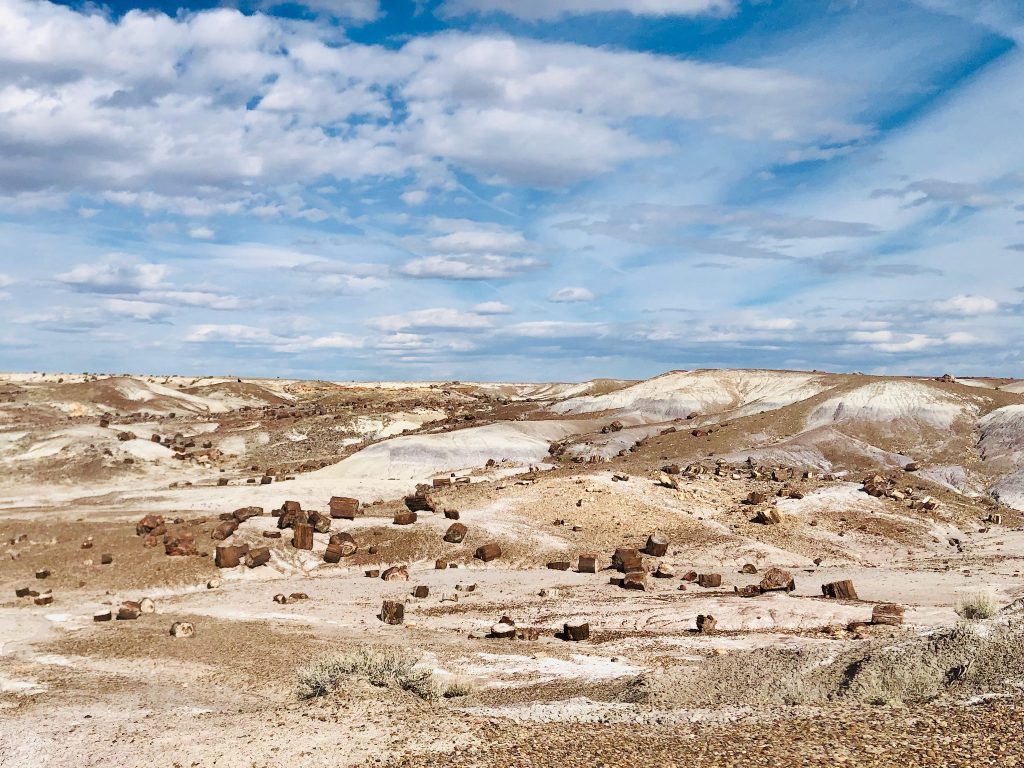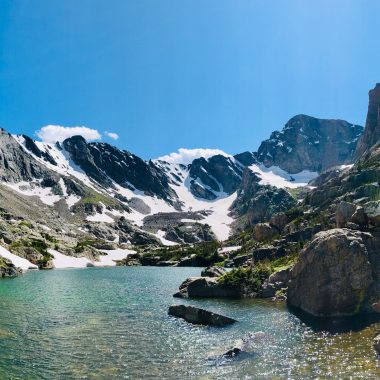In northeastern Arizona, near the southern edge of the Colorado Plateau, you’ll find one of the most intriguing members of the National Park system– Petrified Forest National Park. While there is much to do here, including exploring the rich geological and paleontological history of the park, most people come for the namesake petrified forest. I wasn’t sure what to expect from the park, but found it to be a remarkable experience and a great reminder of the mysterious powers of mother nature.

A Forest Preserved for the Ages
Over 200 million years ago, this area contained a large river system bounded by coniferous trees (among others). As the trees died and fell into the river system, some were buried deeply in the sediment and began to undergo the petrification process. After thousands of years, the organic material of the trees was replaced by minerals to create what appear to be near perfect replicas of the trees in quartz stone. These buried petrified trees were later exposed through eons of erosion– giving us an absolutely exquisite and nearly perfectly preserved look back in time.

It really is remarkable how well preserved these logs are– without looking too closely or touching the hard, cool quartz stone, you might think they were just recently felled trees. We should all look so good at 200 millions years old!

Petrified Forest Road
If you’re entering the park via Highway 40, your first stop is the Visitor Center before beginning the 28-mile scenic Petrified Forest Road. The visitor center was unique among the many I’ve been to in the NPS because it had an open paleontology laboratory with working scientists. I followed the signs to the lab which is behind the main visitor center building to find two paleontologists patiently cleaning and inspecting fossils from the Triassic period, which are common in the area. They don’t seem to mind visitors and were happy to discuss their work– so if you get the chance, make sure to stop in for an up close and personal look at the fossils.
The next highlight on the Petrified Forest Road is the Painted Desert badlands. If you’ve never been to Northern Arizona, the Painted Desert is one of its most beautiful highlights. It stretches from the eastern side of the Grand Canyon all the way here to Petrified Forest National Park.

Agate Bridge
From the Painted Desert overlook, you pass back over HWY 40 into the southern section of the park which contains a number of petrified forest areas. Among the first encounters is the Agate Bridge, a 110 foot long petrified log that spans a natural gully. The log is underpinned by a man-made support to keep it from crumbling.

Jasper Forest
Just across the road from Agate Bridge is the first large field of petrified logs– Jasper Forest. You can take a short walk to the Jasper Forest overlook or do a longer 2.6 mile hike on Old Jasper Forest Road to get a closer look at the petrified logs.

It’s rare to find logs as intact as the one found at Agate Bridge. Most of the logs look like they’ve been cut by a saw, with clean cut lines in 2-3ft wide sections. The logs become brittle after petrification and thus broke apart under stress while they were buried in shifting sediment and rock.

From Jasper Forest, the next large field is Crystal Forest where you can walk a one-mile loop out among the petrified logs. After Crystal Forest, the last major stop, before reaching the southern exit of the park, is the Rainbow Forest Museum and the Giant Logs trail. The museum offers a handout that explains the geological history of the area and the petrification process that preserved the trees here. Make sure to grab a guide before you do the last hike in the park– the Giant Logs trail. This short loop contains many of the largest and most intact petrified logs in the park– putting a solid punctuation mark on this amazing National Park!







